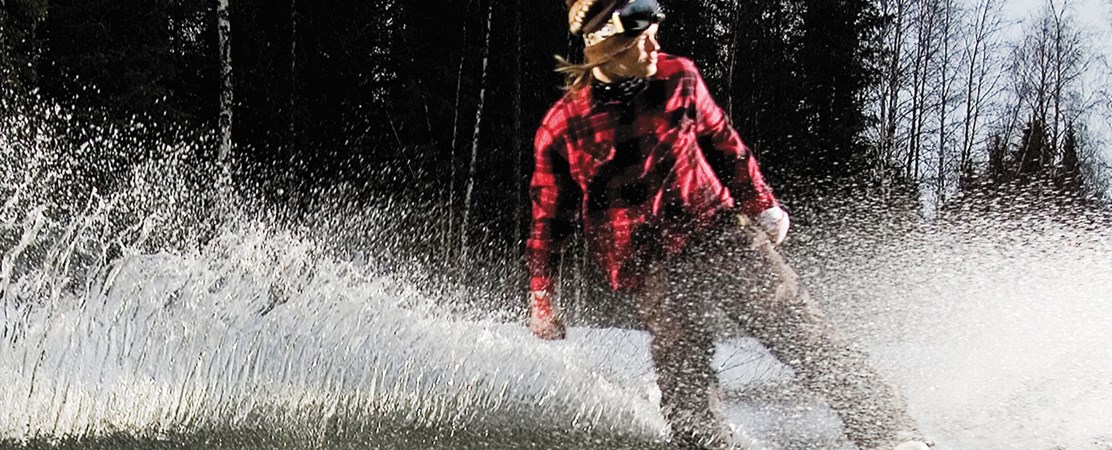The Establishment of UArctic and the Arctic Council Process Behind It

By David Stone, Former Chair, AMAP and Lars-Otto Reiersen, Executive Secretary, AMAP and Jan-Idar Solbakken, Former Saami Council Representative, AMAP
It was at a meeting of the Arctic Monitoring and Assessment Programme (AMAP) in January 1997 in Groningen that UArctic took its initial step from idea to reality.
At this time AMAP was preparing its first reports assessing the State of the Arctic Environment for the Arctic Council. During casual conversation, Bill Heal from Durham University asked Lars-Erik Liljelund (then AMAP Vice-Chair), Lars-Otto Reiersen (AMAP Executive Secretary) and David Stone (then AMAP Chair), “What do you think about the idea of a University of the Arctic?” He described a vision for a consortium of existing universities and institutions cooperating on a circumpolar scale, capitalizing on each other’s strengths through the internet. Heal’s unbounded enthusiasm was infectious. He had an instant answer for all questions, and we saw only benefits.
The need for enhanced circumpolar education at the university level had become obvious to all in AMAP. At the time universities existed in Arctic regions of the Nordic countries, in Alaska, and in Arctic Russia. However, their external linkages were primarily towards their closest neighbours and to the south with fewer functional circumpolar connections. Degrees could not be awarded in Canada’s two higher education Arctic colleges where only a few first-year courses at a university level were available. We immediately saw how the curriculum of all participating universities and colleges could be expanded if these institutions shared course units accreditable towards a degree. Benefits would be just as strong at the postgraduate level, and the ability to focus academic topics in a circumpolar context would be much enhanced. Arctic scholarship in many disciplines would be strengthened, especially those unique to the interests of Arctic residents who would have increased opportunities to pursue an education close to home. We saw a future with an Arctic that was less dependent on expertise trained exclusively in the South.
Heal despaired at the thought of sending his proposal independently around the circumpolar world. Was there a better way? Thoughts turned to the nascent Arctic Council. Heal agreed to provide Stone with a proposal for the next meeting of Senior Arctic Officials (SAOs) of the Arctic Council in Kautokeino in March 1997. The aim was to secure an endorsement that could catalyze concrete action in all circumpolar countries. Meanwhile Terry Fenge and Jan-Idar Solbakken took the important step of consulting with indigenous peoples’ organizations represented in the Arctic Council. Within a few days, their support was confirmed.
It was too late to put Heal’s proposal on the agenda. Therefore it was included in Stone’s report on AMAP progress under the subtitle “A Concept Paper from Canada and Sweden for a Possible University of the Arctic”. The SAOs were intrigued but cautious. Canada, Sweden and AMAP were asked to undertake consultations and to propose planning options. The Circumpolar Universities Association (CUA), Canada, Finland and AMAP supported a small international Task Force chaired by Heal to do the work.
The most ominous reason for SAO caution was that in several Arctic countries education is not a responsibility of the national government but managed by regional governments such as provinces or states. The Arctic Council, however, is a responsibility of national governments. Finland and Sweden identified the circumpolar Ministers of Education as the key to resolving the dilemma. Outi Snellman and Stone met in Québec City prior to the October 1997 meeting of the Ministers to plan how to present the idea to them. The proposal could have suffered an early death, but Snellman successfully obtained the Ministers’ support, although it took some time for this to be unequivocal in Canada and the United States.
Heal set about organizing the work of the Task Force with his familiar passion. Their report “A University of the Arctic: Turning Concept into Reality” was well received at the October 1997 SAO meeting. It was the tipping point that injected momentum into the process. Stone was authorised to send a “letter of invitation” to Snellman, asking if the CUA would prepare a feasibility study for UArctic. Snellman quickly confirmed the CUA’s readiness to undertake the work, and the Task Force was replaced by a CUA Working Group, chaired by Asgeir Brekke from the University of Tromsø. The inclusion of the two Canadian colleges in UArctic was never in doubt, probably due to the seminal contributions made at this time by Sally Ross (now Webber) and Aaron Senkpiel.
After reviewing a Working Group progress report presented by Peter Johnson and Sally Ross in May 1998, the SAO chair Mary Simon suggested that the initiative could be announced at the upcoming Arctic Council Ministerial Conference. Stone drafted language for the Conference declaration concerning the creation of UArctic. The CUA confirmed its willingness to present the Working Group report, and welcomed the proposed endorsement of the initiative at the Arctic Council Ministerial Conference on 14-16 September 1998 in Iqaluit.
Oran Young presented the report “With Shared Voices: Launching the University of the Arctic”. The resulting Iqaluit Ministerial Declaration read: We “welcome, and are pleased to announce, the establishment of a University of the Arctic, a university without walls, as proposed by a Working Group of the CUA. We note the kind offer of Finland to support the interim secretariat. We encourage the Working Group to continue its efforts to consult with northern educational and indigenous authorities and colleges. We look forward to further reports on this issue and to seeking ways to promote the success of this initiative.”
In June 2001, UArctic was launched in Rovaniemi. Today there are over 170 member institutions. The vision has truly flourished and provided a new generation of graduates and postgraduates with a breadth of education and experiences quite impossible to acquire from any single institution.
